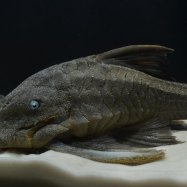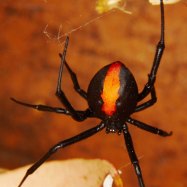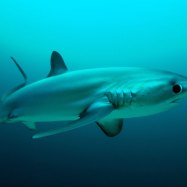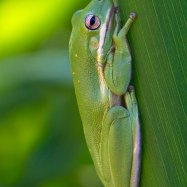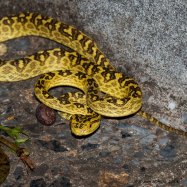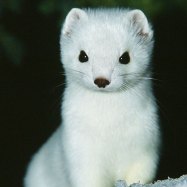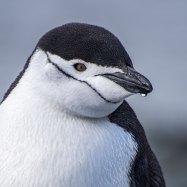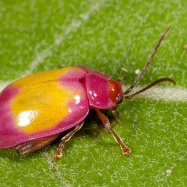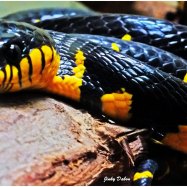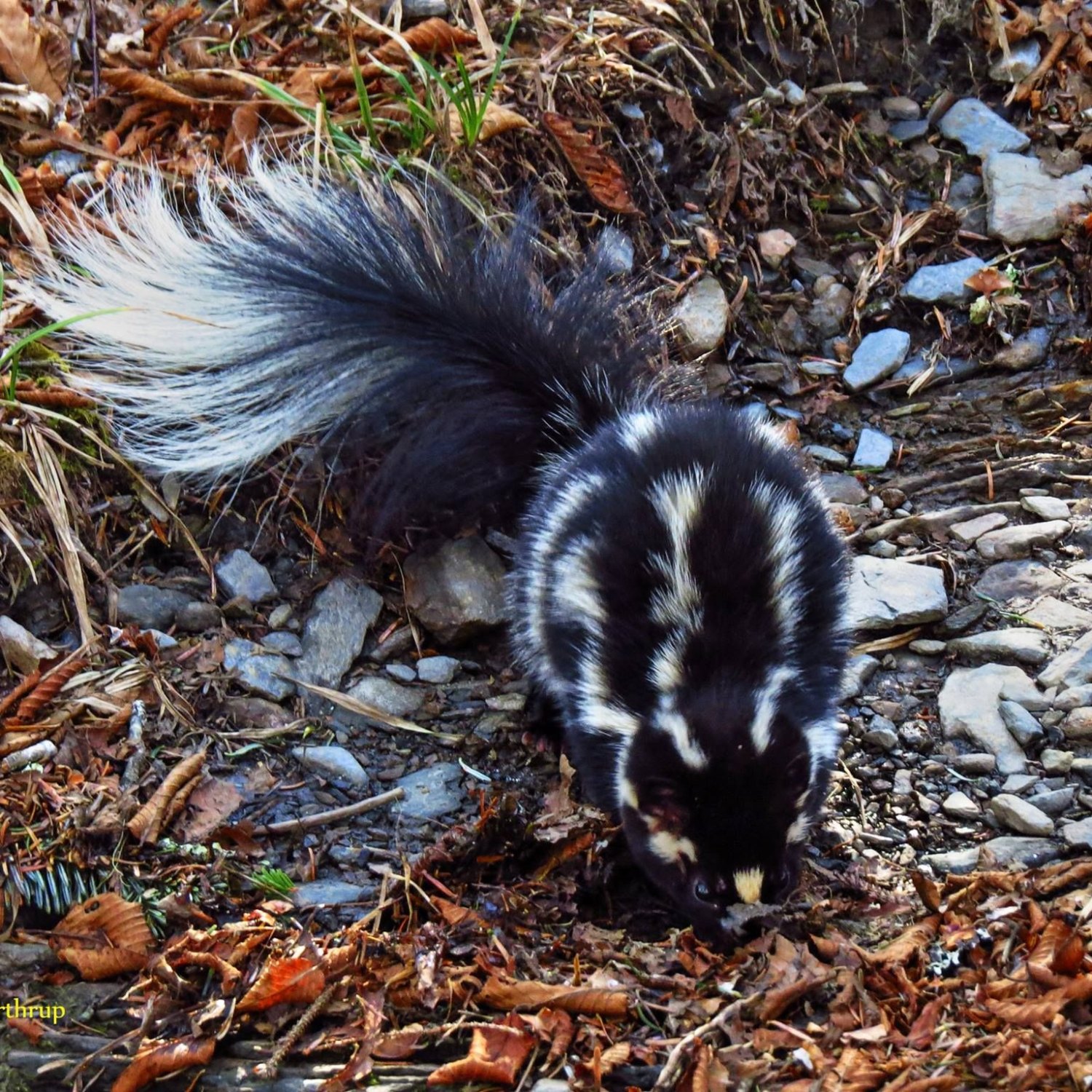
Spotted Skunk
35-50 cm
Spotted skunks are small and slender animals found in forests and grassy areas. With an average length of 35-50 cm, they belong to the Mephitidae family and are known for their distinct spotted appearance. These playful creatures are a delight to spot in their natural habitat. #SpottedSkunk #ForestAnimals #Mephitidae
Animal Details Summary:
Common Name: Spotted Skunk
Kingdom: Animalia
Habitat: Forests, grasslands, shrublands
The Fascinating World of the Spotted Skunk: A Mysterious Carnivore
The animal kingdom is full of unique and interesting creatures, and one such creature is the Spotted Skunk (Spilogale putorius). Also known as the "civet cat" or the "civet mink," this small but mysterious mammal belongs to the family of Mephitidae, deriving its name from the Greek words "spilos," meaning spot, and "gale," meaning mustelid.Spotted Skunks can be found throughout North America, with their preferred habitat being forests, grasslands, and shrublands. However, these creatures show a preference for areas with dense vegetation, such as rocky areas, brushy fields, and woodlands, making it hard to spot them in their natural habitat Spotted Skunk.
The Unique Characteristics of the Spotted Skunk
At first glance, the Spotted Skunk may seem like any other type of skunk with its black fur, but upon closer inspection, you will notice its distinct feature – white spots all over its body. These spots vary in size and may be found not only on the animal's body but also on its head and tail.Apart from its distinctive coloration, the Spotted Skunk also has a unique body shape – small and slender compared to other skunk species. On average, these animals measure between 35 to 50 cm in length, making them one of the smallest skunk species.
A Diet Fit for an Omnivore
As omnivores, Spotted Skunks have a diverse diet. They are known to eat a variety of insects, small rodents, birds, eggs, and even fruits and vegetables. Their hunting activities mostly take place in the evening, where they use their keen sense of smell and remarkable agility to catch their prey.When it comes to feeding, these elusive creatures are not picky and will consume whatever food is available in their habitat. This flexibility in their diet makes them adaptable to changing environments, making them a successful species in the wild Scissor Tailed Flycatcher.
The Mysterious Ways of the Spotted Skunk
Despite being native to North America, the Spotted Skunk is still a mysterious and relatively unknown creature. They have managed to evade human observation and remain elusive in their natural habitat.One of the reasons for their mysterious behavior is their nocturnal nature. These animals are most active at night, making it difficult for humans to catch a glimpse of them. Additionally, they are also solitary creatures, preferring to live alone and only coming together during the breeding season.
A Peek Into the Life of a Spotted Skunk
The life cycle of the Spotted Skunk is just as intriguing as its physical characteristics. After a gestation period of about 60 days, female Spotted Skunks give birth to a litter of 2 to 10 offspring. These young skunks are born weighing only about 12 grams and are blind for the first few weeks.As they grow, these young skunks learn to hunt from their mothers, and by the age of four months, they are ready to venture out on their own. The average lifespan of a Spotted Skunk is between three to four years, with some living up to seven years in captivity.
The Relationship With Humans
Despite being elusive creatures, Spotted Skunks have managed to create a unique relationship with humans. They are known to frequent farms and gardens, often eating pests and helping to control the rodent population in these areas.However, it is not uncommon for these creatures to be seen as nuisances or pests themselves. Many people fear their infamous defense mechanism – the ability to spray a foul-smelling liquid when threatened. This has led to the Spotted Skunk being killed or removed from areas where they may pose a threat to humans.
Conservation Efforts for the Spotted Skunk
As with many other animal species, the Spotted Skunk's habitat has been threatened by human activities, including deforestation and changes in land use. However, these animals have managed to adapt and survive in fragmented habitats, showing their resilience in the face of such threats.Currently, the Spotted Skunk is not considered a threatened species, but conservation efforts are in place to protect their habitats and monitor their populations. It is essential to maintain a healthy balance between human activities and the preservation of this unique species.
Conclusion
In conclusion, the Spotted Skunk is a fascinating and mysterious creature that continues to intrigue and captivate us. From its unique physical appearance to its omnivorous diet and solitary nature, these animals have managed to carve out a niche for themselves in the wild.As we continue to learn more about the Spotted Skunk and its behavior, it is crucial to protect and preserve their habitats to ensure their survival for generations to come. Let us appreciate the beauty and diversity of the animal kingdom, starting with the humble yet remarkable Spotted Skunk.

Spotted Skunk
Animal Details Spotted Skunk - Scientific Name: Spilogale putorius
- Category: Animals S
- Scientific Name: Spilogale putorius
- Common Name: Spotted Skunk
- Kingdom: Animalia
- Phylum: Chordata
- Class: Mammalia
- Order: Carnivora
- Family: Mephitidae
- Habitat: Forests, grasslands, shrublands
- Feeding Method: Omnivorous
- Geographical Distribution: North America
- Country of Origin: United States
- Location: Forest and grassy areas
- Animal Coloration: Black fur with white spots
- Body Shape: Small and slender
- Length: 35-50 cm
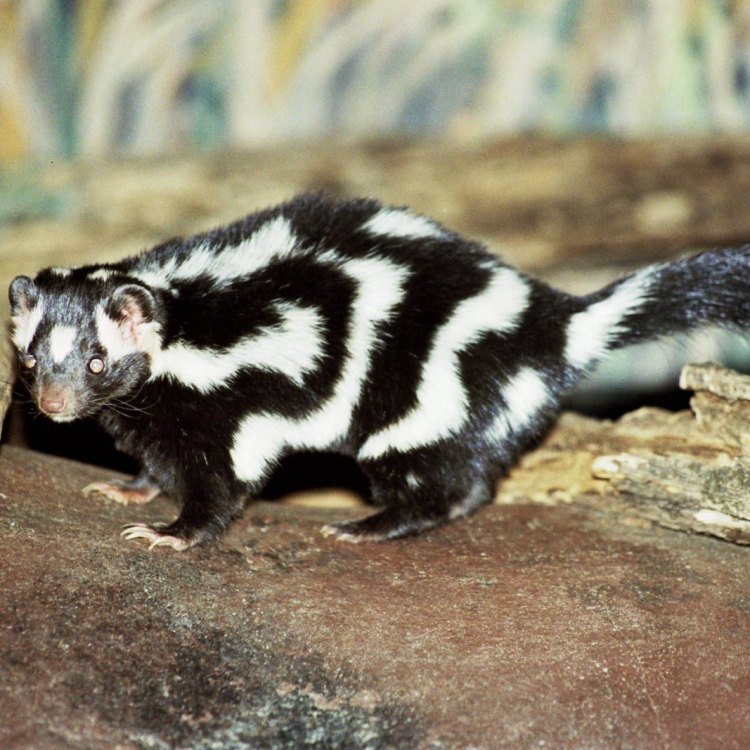
Spotted Skunk
- Adult Size: Small
- Average Lifespan: 2-4 years
- Reproduction: Sexual
- Reproductive Behavior: Polygynous
- Sound or Call: Chattering, hissing, and stomping
- Migration Pattern: No specific migration pattern
- Social Groups: Solitary
- Behavior: Nocturnal and secretive
- Threats: Habitat loss, road mortality, trapping
- Conservation Status: Least Concern
- Impact on Ecosystem: Predator control of small mammals
- Human Use: Considered a pest by some homeowners
- Distinctive Features: White spot pattern on the back
- Interesting Facts: Can perform a handstand as a defense mechanism
- Predator: Coyotes, bobcats, birds of prey
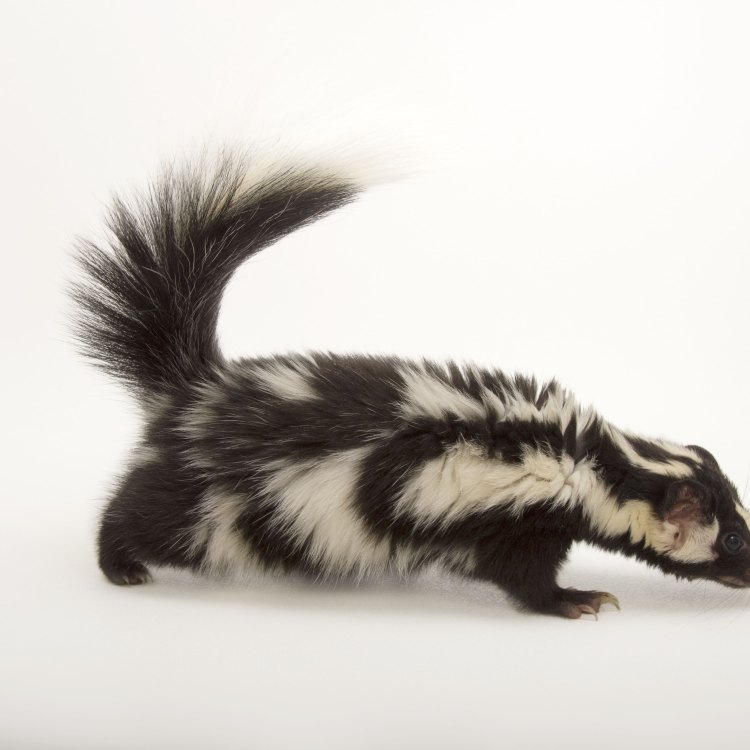
Spilogale putorius
The Secretive and Unique World of Spotted Skunks
From the depths of the wilderness to the backyard of suburban homes, there lurks a small and elusive creature known as the spotted skunk. With their petite size and distinctive white spot pattern, these skunks may seem harmless and unassuming, but they hold many secrets and play a crucial role in their ecosystem.In this article, we will delve into the hidden world of the spotted skunk, exploring their behavior, reproduction, threats, conservation status, and impact on the ecosystem. So, sit back and prepare to be amazed by the fascinating facts about these elusive creatures PeaceOfAnimals.Com.
The Small but Mighty Spotted Skunk
The spotted skunk, scientific name Spilogale putorius, is a species of skunk native to North America. They are one of the smaller species of skunk, with an adult size ranging from 15 to 25 inches in length and weighing only 1-3 pounds. Despite their small size, they have a big presence in the ecosystem.Spotted skunks have a distinct black fur with white spots on their back, giving them their unique name. These spots can vary in size and shape, making each individual skunk easily identifiable. They also have a white stripe that runs from their nose to their forehead, which sets them apart from other skunk species.
These skunks have a lifespan of 2-4 years in the wild, with some individuals living up to 7 years in captivity. Their short lifespan is due to various factors, including predators, disease, and human threats.
A Family of One
Unlike other skunk species that live in social groups, the spotted skunk is solitary and is rarely seen in pairs or family units Snowflake Eel. They prefer to live and forage alone, only coming together during the breeding season.This solitary behavior is due to various factors, including their small size and the competitive nature of their diet. They are primarily insectivores, feeding on insects, small mammals, and occasional fruits and vegetables. This means they do not need to live in large social groups to hunt for food.
The Love Lives of Spotted Skunks
When it comes to mating and reproduction, spotted skunks have an interesting and unique approach. They are polygynous, which means that one male mates with multiple females.During the breeding season, which typically runs from February to May, males will compete for the attention of the female skunks. This competition can involve chattering and hissing, as well as stomping their feet to intimidate rivals. Once the female has chosen her mate, they will mate multiple times over a few days.
After mating, the females will give birth to a litter of 2-10 kits after a gestation period of approximately 2 months. The kits are born blind and hairless and are cared for by the mother until they are ready to be independent, which is typically around 3 months of age.
The Nocturnal Habits of Spotted Skunks
Spotted skunks are primarily nocturnal creatures, meaning they are most active at night. They are adept climbers and can often be found foraging in trees and bushes for insects and small mammals.During the day, they will sleep in dens, which can be found in hollow logs, abandoned burrows, or under rocks and debris. They are also known for their secretive behavior, and if disturbed, they will quickly scurry away into their den.
Their nocturnal habits and secretive behavior make it challenging to study and observe spotted skunks in their natural habitat. Therefore, not much is known about their behavior and movements outside of the breeding season.
The Threats to Survival
Like many other wildlife species, spotted skunks face many threats to their survival. Habitat loss is one of the most significant issues, as their preferred habitats, such as grasslands and shrublands, are often cleared for human development. This causes a loss of food sources and shelter for the skunks, making it harder for them to survive.Another significant threat to spotted skunks is road mortality. They are often found as victims of collisions with vehicles, as they are small and agile, making it hard for drivers to spot them on the road.
Trapping is also a threat to spotted skunks, as their fur is highly valued for the fur trade. Although this practice is heavily regulated, illegal trapping still occurs, posing a risk to the survival of the species.
The Conservation Status of Spotted Skunks
Despite the various threats they face, the spotted skunk holds a conservation status of "Least Concern" according to the International Union for Conservation of Nature (IUCN). This status means that the species is not currently considered at risk of extinction. However, their population is declining, and conservation efforts are still necessary.The best way to protect spotted skunks is by preserving their habitat, reducing the number of road accidents, and enforcing regulations on trapping. It is also essential to educate others on the importance of coexisting with wildlife and the role that the spotted skunk plays in the ecosystem.
The Impact on the Ecosystem
Spotted skunks may be small, but they play a significant role in their ecosystem. As insectivores, they control the population of insects, including agricultural pests, which benefits farmers and the ecosystem as a whole. They also prey on small mammals, keeping their populations in check and preventing overgrazing and habitat destruction.They are also an important part of the food chain, providing a food source for predators such as coyotes, bobcats, and birds of prey. Without the presence of spotted skunks, there could be an imbalance in the ecosystem, leading to potential negative consequences.
The Misunderstood Pests
Unfortunately, not all humans see the value of these small but mighty creatures. Spotted skunks are sometimes considered pests by homeowners, mainly due to their potent spray and potential to enter houses and damage property.With that said, like any other wildlife, spotted skunks are essential to our ecosystem, and it is our responsibility to coexist with them peacefully. Educating ourselves and others about their behavior and ways to coexist can help reduce negative human-wildlife interactions.
Interesting Facts About Spotted Skunks
Apart from their handstand defense mechanism, there are many other interesting facts about spotted skunks that most people are not aware of. For instance, did you know that:- Spotted skunks are immune to the venom of some species of snakes, enabling them to eat and hunt snakes without being harmed.
- They have a unique musk that smells like flowers, unlike the potent and unpleasant smell of other skunk species.
- Spotted skunks are excellent climbers and can climb trees to escape predators or search for food.
- They can rotate their hind legs 180 degrees, allowing them to run backward with ease.
- The color and pattern of spots on each skunk's back are uniquely different, which helps researchers identify them in the wild.
Conclusion
The spotted skunk may be small and elusive, but they hold many secrets and play a crucial role in their ecosystem. Their unique behavior, nocturnal habits, and reproductive strategies make them a fascinating species to study and admire.While they face threats to their survival, their conservation status remains "Least Concern." However, it is essential to continue to raise awareness and protect their habitat to ensure their survival and the balance of the ecosystem they are a part of.
So, the next time you catch a glimpse of a spotted skunk in your backyard, try to appreciate their beauty and value rather than seeing them as a nuisance. After all, they are a vital part of the complex and diverse web of life on our planet.
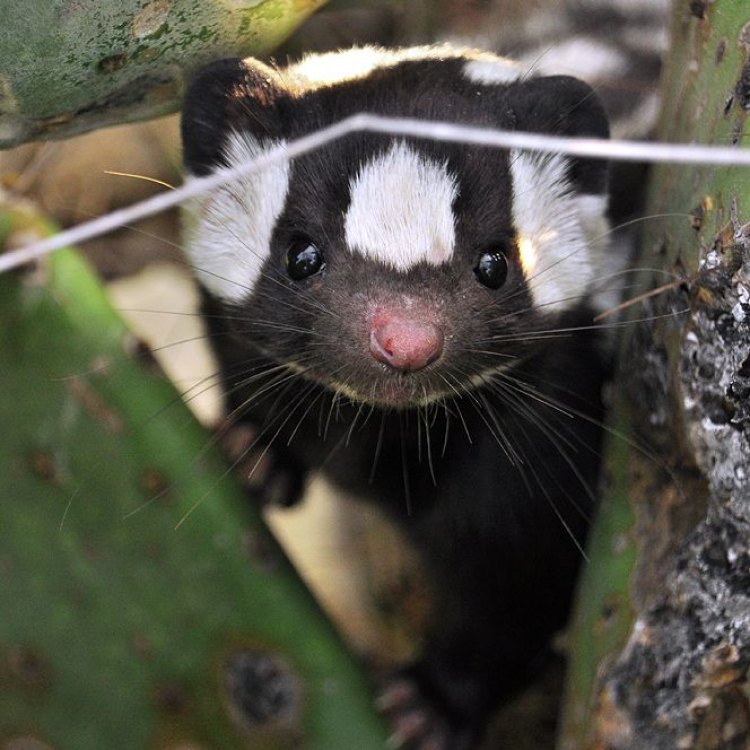
The Fascinating World of the Spotted Skunk: A Mysterious Carnivore
Disclaimer: The content provided is for informational purposes only. We cannot guarantee the accuracy of the information on this page 100%. All information provided here may change without prior notice.

